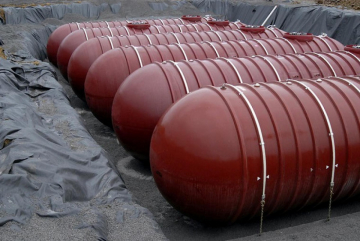After a wave of new installations in the 1990s, many underground storage tanks (USTs) are approaching the end of their lifetime warranties (which are often 30 years), which means that a wave of removals is on the horizon. Since tank removals and replacements are a major trigger for the discovery of structural issues and leaks, now is a good time to make sure you understand your environmental insurance coverage and are prepared for the claim appraisal and remediation process—before it is too late.
Planning is Everything
It’s important to feel confident in your coverage before you have any need to use your insurance (isn’t that the point, after all?) so our environmental insurance experts have put together four tips to help make sure you are ready for anything.
1. Understand your policy
Every policy will have its own requirements to trigger coverage. An important one to understand first is the notification requirement--a claim must be made to the insurance carrier within a certain timeframe after the insured becomes aware of the issue. Make sure you know your timeframe and are prepared to act within it! Your policy period is also important, as is the timeframe of the release itself. The release needs to have occurred during the policy period in order to trigger coverage. You want to ensure your coverage is broad enough to capture potential unknown historical liabilities in order to properly manage your risk. You also want to be very clear on what assets are included in your policy and have a plan to update coverage as you acquire new tanks or face other relevant equipment or site changes.
Once you meet the notification, timeframe, and asset coverage requirements, the insurer will determine what work is “reasonable and necessary” to remediate the issue at hand. It’s important to understand what will and won’t be in scope from your insurer’s perspective—their contractual obligation is only to remediate to the point where regulatory requirements are satisfied, and no further. This means that any additional corrective action or upgrades will be in your own dime, so plan accordingly.
2. Prepare for a possible release
The best offense is a good defense, so robust asset maintenance, a strong compliance program, and solid emergency planning are all crucial. There are generally three ways that a release will manifest, and you’ll want to consider how each would look at your facility:
- New releases become apparent after failed tightness tests, inventory alarms, or overfills.
- Pre-existing unknown releases are often discovered during Phase 2 environmental site assessments, during system upgrades or removals, or in response to 3rd party complaints.
- Emergency responses are unexpected catastrophic failures, often with extensive 3rd party impact.
Regardless of the scenario you find yourself in, your insurance company will make requests for all available environmental documentation, including tank compliance and testing information, so make sure all of your historical paperwork is current, complete, and easily accessible.
3. Communicate, communicate, communicate
It’ll likely come as no surprise that, especially during a stressful event such as a release, communication is key. With regards to your insurance carrier, you’ll want to make sure to communicate the issue quickly to meet your policy’s notification requirement, but beyond that you should aim for a “no surprises” strategy. By proactively communicating work plans and any change order requests to your insurer, you can ensure everyone is on the same page and that all work will proceed (and be covered) as expected. This approach extends to any consultants or contractors you may need to bring onboard-- you should always hire experts with experience navigating the complex world of environmental insurance and then make sure they understand your expectations around clear, regular, effective communication.
You’ll also want to make sure you have accurately mapped and are in contact with all appropriate stakeholders, both with regards to planning and confirming coverage and in the event a release should occur. In addition to yourself as the owner/operator and policy holder, these stakeholders include the insurance broker, carrier claims and internal risk engineering managers, regulators, attorneys, consultants and contractors, and any impacted 3rd parties. Make sure to keep these communication channels open for the full life of the claim.
4. Leverage your Premium
Because of their shared interest in avoiding losses and mitigating environmental impact, many insurers actually offer free or extremely low-cost resources to policyholders, including training, compliance resources, access to consultants, or other incident prevention support. This information doesn’t always make its way to the remediation manager, so make sure you have the conversation! Check with your risk manager or insurance broker, or contact your insurer directly to see what resources might be available and how they can support your efforts.
Make the Most of Your Coverage
Environmental insurance exists to reduce risk and protect your business, but to get the most out of this investment, you will need to play an active role. By fully understanding your policy (and keeping it updated), preparing in advance for the unexpected, keeping the lines of communication open, and partnering with your insurer, you can feel secure that your policy will be ready and waiting for you, should you ever need it.
Looking for some extra support? Our experts have decades of experience working on environmental insurance claims and are ready to take your call.
NOTE: This blog is for informational purposes only. You should not rely on the information in this blog as an alternative to advice from an environmental and/or insurance professional as each situation is unique. If you have any specific questions about any matter you should consult your insurance broker.
Want more news and insights like this?
Sign up for our monthly e-newsletter, The New Leaf. Our goal is to keep you updated, educated and even a bit entertained as it relates to all things EHS and sustainability.
Get e-NewsletterHave any questions?
Contact us to discuss your environment, health, safety and sustainability needs today.





